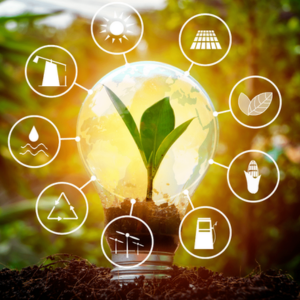With the growing demand for sustainability, utilities are increasingly focusing on green energy solutions to minimize their environmental footprint. By adopting these strategies, utilities can significantly reduce reliance on fossil fuels and lead the charge toward a cleaner future. Below are some of the best practices that utilities can implement:
1. Embrace Renewable Energy
One of the most effective green energy solutions is shifting to renewable sources like solar, wind, and hydro power. These energy sources generate electricity without emitting greenhouse gases, making them a critical part of reducing carbon emissions. Utilities can invest in large-scale renewable projects, such as solar farms and wind parks, which provide clean energy to large populations. On a smaller scale, they can also support residential solar installations by offering rebates or incentive programs. By making renewable energy more accessible, utilities help communities reduce their reliance on fossil fuels and contribute to long-term sustainability.
2. Enhance Energy Efficiency
Energy efficiency is another key component of green energy solutions. By reducing overall energy consumption, utilities can lower demand on the grid and minimize the need for additional energy production. Utilities can launch energy efficiency programs that promote the use of energy-efficient appliances, LED lighting, and smart home technologies. Offering financial incentives or rebates for purchasing energy-saving products can encourage customers to adopt more sustainable habits. Additionally, utilities can provide energy audits to help consumers identify areas in their homes or businesses where energy efficiency improvements can be made, further driving reductions in consumption.
3. Implement Smart Grids
Smart grid technology is a game changer for green energy solutions. Traditional grids are limited in their ability to manage renewable energy sources, as these sources can be intermittent. Smart grids, however, enable real-time monitoring and adjustment of energy flows, allowing utilities to optimize energy distribution and integrate renewable power more effectively. Smart grids can also detect outages and automatically reroute power, improving reliability and reducing energy waste. By utilizing this technology, utilities can create a more resilient energy infrastructure that efficiently supports the shift toward renewable energy.
4. Promote Water Conservation
The energy and water sectors are closely intertwined, as water is often required for electricity generation, and energy is needed for water treatment and distribution. As part of a broader green energy solution, utilities should focus on reducing water consumption to save both water and energy. Programs that promote the use of water-efficient appliances, such as low-flow faucets and irrigation systems, can help achieve this. Smart meters that track water usage in real time can also encourage consumers to conserve water, further reducing the energy required for water-related processes. By addressing both energy and water use, utilities can take a more holistic approach to sustainability.
5. Foster Community Engagement
Building community awareness is essential for the success of any green energy solution. Utilities can play a pivotal role in educating consumers about the benefits of sustainability and how they can reduce their own energy consumption. Hosting workshops, distributing educational materials, and offering online resources are effective ways to promote green practices. Additionally, creating community initiatives, such as tree planting or energy-saving competitions, can engage customers in a hands-on way, fostering a shared sense of responsibility for environmental stewardship.
6. Set Clear Sustainability Goals
For green energy solutions to be effective, utilities need to set measurable sustainability targets. These goals might include reducing carbon emissions, increasing the percentage of energy generated from renewable sources, or lowering overall energy consumption across their service area. By setting clear, data-driven objectives, utilities can better track their progress and make adjustments as needed. Regularly reporting on these goals also enhances transparency and builds trust with consumers, who are increasingly interested in supporting companies that prioritize sustainability.
7. Collaborate with Stakeholders
Collaboration is essential for the successful implementation of green energy solutions. Utilities should partner with government agencies, non-governmental organizations (NGOs), and other stakeholders to pool resources and expertise. Public-private partnerships can be especially effective in securing funding for large-scale renewable energy projects or launching energy efficiency programs. Additionally, working with academic institutions can help utilities stay at the forefront of emerging green technologies and innovative energy solutions.
Conclusion
By embracing green energy solutions, utilities can not only reduce their environmental impact but also meet the growing demand for sustainable energy practices. From investing in renewable energy projects to enhancing energy efficiency and promoting water conservation, these best practices offer a roadmap for utilities to lead the way in the fight against climate change. Fostering community engagement, setting clear sustainability goals, and collaborating with stakeholders will further amplify the impact of these efforts, creating a greener, more sustainable future for everyone.
To know more, Do follow https://www.jlmelectrical.co.uk/renewables
you can also visit our blog https://utility7.com/wp-admin/post.php?post=553&action=edit

